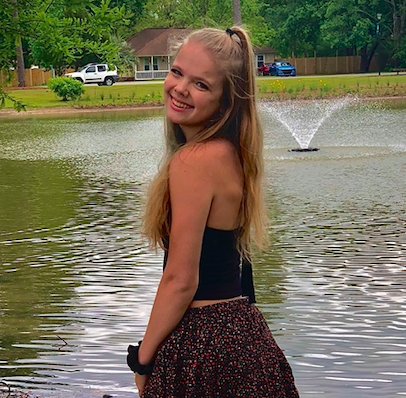Using Maps to Identify Sources of Nutrition in Food Deserts
Tori Bearden ’22
Major: Environmental Studies
Minor: Biology; Food Studies
Mentors: Patrick Hurley, professor of environmental studies, and Tristan Ashcroft, lecturer in environmental studies
Tori Bearden ’22 came to Ursinus intending to be a biology major, but her path changed the day she met Patrick Hurley. She switched her major to environmental studies and quickly had a role working with the college’s food forest. “I didn’t even know we had a food forest on campus at the time, but I said yes because I was a sophomore and wanted to get involved with as many things as possible,” said Bearden.
From there, her involvement kept growing. “If you had told sophomore me that I would be using ArcGIS software, I would have said, ‘What does that even mean?’ I didn’t even know half of this stuff existed, but I love it.”
ArcGIS is a spatial analysis program that Bearden uses as part of her Summer Fellows project to create maps to see if trees found in Baltimore can provide food for nearby areas that are classified as food deserts. “We have a data set of all the trees. We go through to find out which species they are, what kinds of foods they produce, and how nutritious they are. Then we compare the data to see if the trees can help the areas that are classified as food insecure in the city.” Among the trees in Baltimore that produce edible fruits, berries, seeds, or leaves are the kousa dogwood, American persimmon, Allegheny serviceberry, and littleleaf linden.
“Obviously this isn’t the sole answer to helping these communities with food insecurity, but it’s something that can be considered to help out in the future, like planting more species that provide food in these areas instead of species that don’t provide food. I’ve worked with the Ursinus food forest since my sophomore year, so that’s really where all my interest comes from. There are more cities now that are trying to incorporate urban green spaces and infrastructure to provide more food for communities instead of just a corner store that doesn’t have nutritious food.”
Food forests are resources that provide a lot of ecosystem services as a whole, and green spaces in general allow a connectedness to nature, said Bearden. “Creating more food forests in cities not only gives people access to nutritious food, but it also helps the environment by cutting down on greenhouse gas emissions from transportation associated with delivering a normal bag of chips to a corner store. So, yeah, it’s bigger than just the food.”
